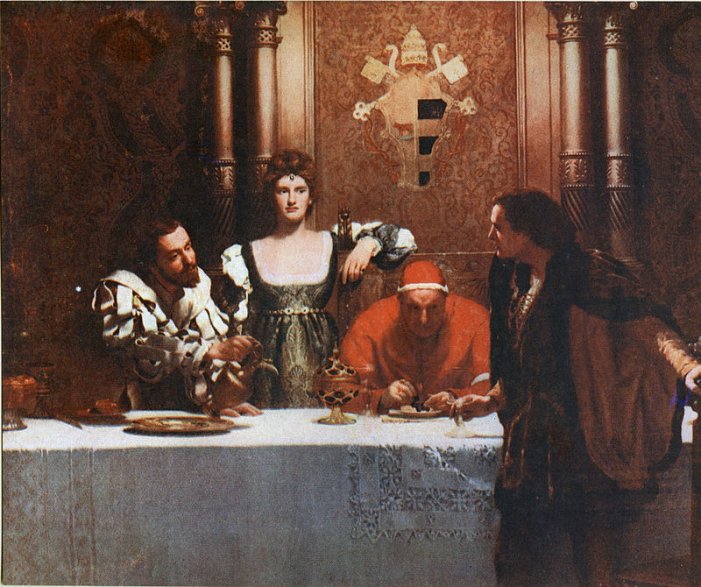House Of Borgia – The Most Infamous Family Of Renaissance Italy
Ellen Lloyd - AncientPages.com - Murder, greed, lust for power, political intrigue, scandals, incest, and corruption are the reasons why the House of Borgia easily became the most infamous family of Renaissance Italy.
The Renaissance was an intriguing period in Europe, and the history of the Borgia family was equally ‘colorful’, and lively. Between the 14th and 17th centuries, Europe experienced a re-birth characterized by stunning intellectual and cultural achievements.
Painting by John Collier, "A glass of wine with Caesar Borgia", from left: Cesare Borgia, Lucrezia, Pope Alexander, and a young man holding an empty glass. The painting represents the popular view of the treacherous nature of the Borgias - the implication being that the young man cannot be sure that the wine is not poisoned. Credit: Public Domain
Great minds like Leonardo da Vinci and Michelangelo provided Europe with magnificent inventions and paintings. Nostradamus began making prophecies and alchemists struggled to discover the elixir of life. The line between philosophy, science, occultism, and theology was thin. Everything was debated, and the Renaissance encouraged new ways of thinking.
To most common people, life didn’t change much though. The Roman Catholic Church became richer and more powerful, but ordinary people had to work hard to survive. Truth to be told, few ordinary people cared about Leonardo da Vinci’s inventions and the masterpieces produced by Michelangelo.
During the Renaissance two, strong and powerful families emerged in Italy. Their legacy has survived to this day. One family was the House of Medici. As Ancient Pages mentioned earlier, the Medici family were bankers at heart, and they are often referred to as Renaissance Godfathers.
The other family was the House of Borgia and their members also rose to power and fame. Both these families played an important role in the history of Italy and other European countries.
The Borgia’s Rise To Power
The Borgia was an Italian-Spanish aristocratic family that originated from Aragon, Spain. In the late fifteenth century, Italy was not a united country as it is today. There were dozens of independent Italian states that varied in size. By the end of the 15th century, five Italian states became truly significant; Venice, Milan, Florence, Naples, and the Papal States.
View of Florence, the birthplace of the Renaissance. Credit: Steve Hersey, Wikipedia, CC BY 2.0
Alfonso de Borgia (1378–1458), who was first a professor of law at the University of Lleida established the family’s influence in Italy. When Alfonso de Borgia was appointed as a diplomat for the Kings of Aragon, he became highly involved in the political world. Being an ambitious man, whose services were valued by the King and the Church, he eventually became a Cardinal. In 1455, when he was 77-year-old, he became Pope Calixtus III, and he reigned as a Pope for three years.
Rodrigo Borgia – Pope Alexander VI And His Many Illegitimate Children
The Borgia family members were ambitious, and they were able to get two of its members elected as Pope. The road to success would have been harder if they hadn’t helped each other. After being elected Pope, Alfonso de Borgia seemed to have forgotten his honesty and made sure his family members were appointed to key Church offices. He used his military nephew, Rodrigo Borgia (1431–1503) as a weapon to bring in more power and wealth.
Rodrigo Borgia was appointed by his uncle Alfonso de Borgia and he became a cardinal of the Roman Catholic church and, later in 1492, Pope Alexander VI.
Before Rodrigo Borgia became a Pope, he used his time to acquire “a vast amount of administrative experience, as well as wealth and influence.”
Andrew Alexander, author of the book The Borgias: Three Faces of Evil, writes that Rodrigo Borgia “showed himself to be intelligent with an appreciation for art and science. He was a gifted speaker. According to the Vatican researcher, Peter de Roo, "was so familiar with Holy Writ that his speeches were fairly sparkling with well-chosen texts of the Sacred Books.”
He also used his influence to decide the fate of the marriage of King Ferdinand and Queen Isabella, and successfully secured large amounts of land and other possessions, making the Borgia family even richer than before.
Rodrigo Borgia had several illegitimate children. Being a cunning and ambitious man, he used his influence to give his children highly influential positions throughout the Italian political and religious realms. During his reign as Pope Alexander VI, he always struggled to acquire more personal and papal power and wealth, often enriching the Borgia family directly.
Rodrigo made certain that his son Cesare was eventually appointed Cardinal. Cesare also became a powerful military leader and it was thought that he had control over his father. This situation led many people to go to him first instead of approaching his father. Rodrigo’s other son Giovanni was selected as captain-general of the Papal Army.
According to Andrew Alexander, “using his wealth and position, Rodrigo was able to ensure that his nephew Juan became archbishop of Monreale, and his two daughters, Girolama and Isabella were both married to men from prominent Italian families.”
The Borgias’ Favorite Weapon – Disposing Of Their Enemies
The Borgia family became richer and more powerful than ever, but their road to success was dishonest, and they didn’t hesitate to murder those who stood in their way. There was a public side of the Borgias and a private side that was much darker.
If the Borgias were not as successful with their military work, then they simply got rid of those who interfered with their plans. In those days, poisoning was rather common, and many were accused of committing such murders, but offering proof a person was guilty of such a crime was much harder. Readers of Ancient Pages may recall the story of the Sicilian woman Giulia Tofana who poisoned 600 men before being caught.
Lucrezia Borgia And Cesare Borgia – Scandals, Murder And Some More Shocking Events
Lucrezia Borgia (1480-1519), daughter of Pope Alexander VI has been painted in very dark colors, and she has been accused of many crimes and excesses.
As Andrew Alexander writes, “she is primarily remembered as the daughter of a corrupt and scheming pope and the sister of an immoral and murderous brother. Rumors of incest with both her father and her brother have hounded her through the centuries. The birth of a mysterious baby, the death of her second husband and her attendance of the Ballet of Chestnuts have only added to her persona. Add to that the charges of being a poisoner, a serial adulteress and a witch”.
Portrait of Gentleman, Cesare Borgia Duke of Valentinois. Credit: Public Domain
Lucrezia Borgia’s brother, Cesare was certainly not the best Pope. “He was widely believed to have killed his brother Juan, bedded his sister and his sister-in-law. In his efforts to acquire a duchy for himself among the scattered Papal States, numerous men who either stood in his way or offended him were disposed of, either by Cesare personally or one of his henchmen. He also ordered the killing of his rebellious condottieri captains and his sister's second husband,” Andrew Alexander writes.
How much of this is true is uncertain, but there is evidence Cesare did “order the execution of his disloyal captains and the murder of Alfonso d’Aragon, Lucrezia’s second husband.”
As Andrew Alexander explains, “the Borgias popes, especially Alexander, stripped Italian families of their lands, titles and wealth. They turned to foreign powers, Aragon and then France for assistance, thus disrupting the delicate balance of power within Italy.”
Such actions and outcomes could also be the reason why the House of Borgia has been portrayed in dark colors and given a bad reputation.
Of course, one mustn’t forget that Italy was filled with rumors, and today it can be difficult to separate real events from myths, but there is an old saying - there isn't smoke without fire.
Updated on May 8, 2022
Written by Ellen Lloyd – AncientPages.com
Copyright © AncientPages.com All rights reserved. This material may not be published, broadcast, rewritten or redistributed in whole or part without the express written permission of AncientPages.com
Expand for referencesMore From Ancient Pages
-
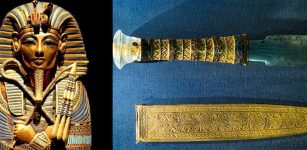 Tutankhamun Had An Ancient Dagger From Outer Space
Archaeology | Jun 1, 2016
Tutankhamun Had An Ancient Dagger From Outer Space
Archaeology | Jun 1, 2016 -
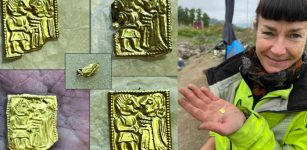 Mysterious Tiny 1,400-Year-Old Gold Foil Figures Found In Pagan Temple
Archaeology | Sep 23, 2023
Mysterious Tiny 1,400-Year-Old Gold Foil Figures Found In Pagan Temple
Archaeology | Sep 23, 2023 -
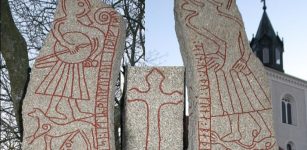 Ledberg Stone (Ledbergsstenen) With Magic Formula Dated To Viking-Era – One Of Most Beautiful Landmarks
Featured Stories | Jan 5, 2023
Ledberg Stone (Ledbergsstenen) With Magic Formula Dated To Viking-Era – One Of Most Beautiful Landmarks
Featured Stories | Jan 5, 2023 -
 1,600-Year-Old Pendants Depicting Humans And Animals Excavated In Ancient Port-City Of Assos
Archaeology | Jan 21, 2020
1,600-Year-Old Pendants Depicting Humans And Animals Excavated In Ancient Port-City Of Assos
Archaeology | Jan 21, 2020 -
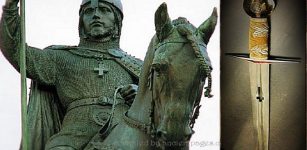 Prince Wenceslaus Of Bohemia Murdered On Order Of His Own Brother
Featured Stories | Nov 19, 2019
Prince Wenceslaus Of Bohemia Murdered On Order Of His Own Brother
Featured Stories | Nov 19, 2019 -
 Lost Knowledge Of Energy And Crystal Technology In Ancient Egypt
Ancient Technology | May 17, 2019
Lost Knowledge Of Energy And Crystal Technology In Ancient Egypt
Ancient Technology | May 17, 2019 -
 A 4.4 Million-Year-Old Hand Of ‘Ardi’ Has Some Clues On Humans’ Upright Walking
Fossils | Feb 25, 2021
A 4.4 Million-Year-Old Hand Of ‘Ardi’ Has Some Clues On Humans’ Upright Walking
Fossils | Feb 25, 2021 -
 Why Did Neanderthals Visit A Special Cave In Jersey For Over 100,000 Years?
Archaeology | Dec 13, 2016
Why Did Neanderthals Visit A Special Cave In Jersey For Over 100,000 Years?
Archaeology | Dec 13, 2016 -
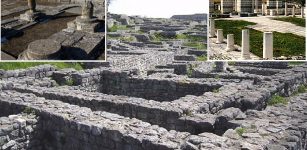 Pliska: Ancient City Ahead Of Its Time With Secret Underground Tunnels, Sewage And Heating Systems
Featured Stories | May 22, 2017
Pliska: Ancient City Ahead Of Its Time With Secret Underground Tunnels, Sewage And Heating Systems
Featured Stories | May 22, 2017 -
 Evidence Of Cosmic Catastrophe 12,800 Years Ago – Earth Collided With Fragments Of A Comet
Archaeology | Feb 2, 2018
Evidence Of Cosmic Catastrophe 12,800 Years Ago – Earth Collided With Fragments Of A Comet
Archaeology | Feb 2, 2018 -
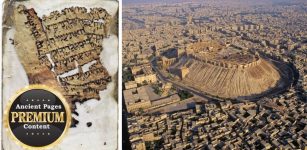 Unsolved Mystery Of The Aleppo Codex And Its Missing Pages: One Of The World’s Most Precious Ancient Books
Artifacts | Feb 27, 2017
Unsolved Mystery Of The Aleppo Codex And Its Missing Pages: One Of The World’s Most Precious Ancient Books
Artifacts | Feb 27, 2017 -
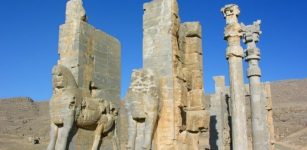 Discovery Of 1500-Year-Old Celestial Observatory Dated To Sassanian Empire
Archaeology | Mar 16, 2017
Discovery Of 1500-Year-Old Celestial Observatory Dated To Sassanian Empire
Archaeology | Mar 16, 2017 -
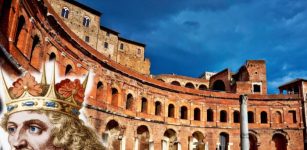 On This Day In History: First Siege Of Rome Began – On March 2, 537
News | Mar 2, 2017
On This Day In History: First Siege Of Rome Began – On March 2, 537
News | Mar 2, 2017 -
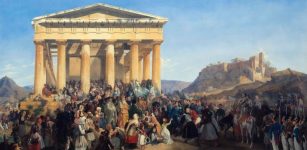 On This Day In History: Independence Of Greece Is Recognized By The Treaty Of London – On May 7, 1832
News | May 7, 2016
On This Day In History: Independence Of Greece Is Recognized By The Treaty Of London – On May 7, 1832
News | May 7, 2016 -
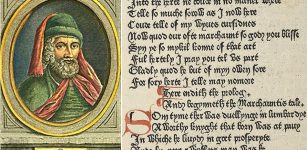 On This Day In History: William Caxton Printed His First Book – On Nov 18, 1477
News | Nov 18, 2016
On This Day In History: William Caxton Printed His First Book – On Nov 18, 1477
News | Nov 18, 2016 -
 Bizarre And Unexplained Phenomenon That Defied The Laws Of Nature
Featured Stories | May 12, 2018
Bizarre And Unexplained Phenomenon That Defied The Laws Of Nature
Featured Stories | May 12, 2018 -
 Mystery Of Hizir – One Of The Most Enigmatic And Extraordinary Ancient People
Featured Stories | Oct 16, 2018
Mystery Of Hizir – One Of The Most Enigmatic And Extraordinary Ancient People
Featured Stories | Oct 16, 2018 -
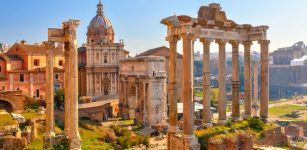 Ice Core Records From Greenland Tell Stories Of Rise And Fall Of Ancient European Civilizations
Archaeology | May 24, 2018
Ice Core Records From Greenland Tell Stories Of Rise And Fall Of Ancient European Civilizations
Archaeology | May 24, 2018 -
 Researchers Confirm Museum Shrunken Head As Human Remains
Archaeology | Aug 4, 2022
Researchers Confirm Museum Shrunken Head As Human Remains
Archaeology | Aug 4, 2022 -
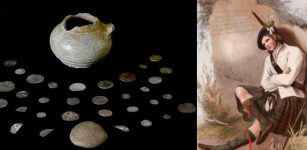 Coin Hoard Paints A Fascinating Picture Of Life Of Highland Clan Chief And His Household
Archaeology | Oct 13, 2023
Coin Hoard Paints A Fascinating Picture Of Life Of Highland Clan Chief And His Household
Archaeology | Oct 13, 2023

